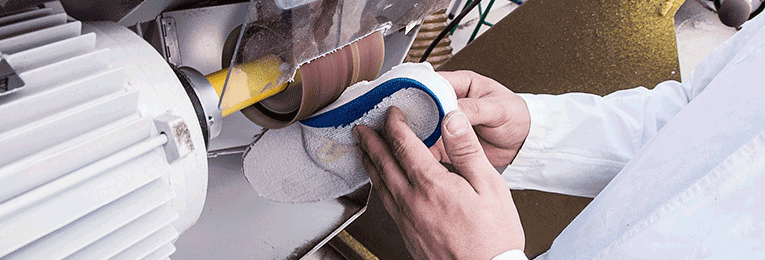On 21 April 2018, the new Regulation (EU)2016/425 will come into force, superseding the previous Directive 89/686/EEC on personal protective equipment. It’s important to immediately make clear that the essential requirements of health and safety relative to the design and manufacturing of personal protective equipment(PPE) will remain unvaried from the obligations set down in Directive 89/686/EEC.
The Regulation is mandatory in all of its parts and leaves no room for open interpretation by Member States through national laws, meaning that once it is in force, its provisions are legally binding for all those who are subject to the laws of the European Union.
This is already a first significant difference when compared with the previous Directive, which was binding for Member States only when it came to the results to be achieved, leaving them free to decide how to transpose it into national laws.
 What changes with the entering into force of the new Regulation?
What changes with the entering into force of the new Regulation?
The first change is from a legislative standpoint: with the new Regulation, the protection and personal safety of the worker (using the PPE)is placed in a position of central importance, while the aim of Directive 89/686/EEC was to not obstruct free trade in the EU market, removing barriers of both a technical and legislative nature.
The second change promptly defines the responsibilities of the distribution chain, limiting the validity of EU-type examination certificates to 5 years.
Moreover, unlike the Directive, the new Regulation classifies and defines obligations and liabilities for gloves manufactured for private use protecting against heat (oven gloves) and for PPE manufactured in series and/or as individual products for a single end user (for example, professional orthopedic footwear).
Excluded from the Regulation (as they were from the Directive) are products designed for private use to protect against atmospheric conditions that are not of an extreme nature and damp and water (like gloves for domestic use), those designed for use by the armed forces and for self-defence (with the exception of PPE intended for sporting activities), those for exclusive use on seagoing vessels or aircraft; the helmets and their visors for drivers and passengers of motor cycles and mopeds.
To make the transition to the new legislation and relative obligations easier, there will be a transitional period from 21 April 2018 to 20April 2019, during which the stakeholders of the distribution chain will have time to adapt their PPE certifications to the new Regulation and according sell-off the remainder of their warehouse stock.
PPE designed and manufactured in accordance with Directive 89/686/EEC can still be placed on the market for the first time up until 20 April2019. This means that it is possible to design, manufacture, and then certify new PPE in accordance with the Directive, even after entry into force of the Regulation, as long as it is done no later than 20 April 2019.

Moreover, PPE made available on the market or rather PPE designed, manufactured, and certified according to the Directive, will in any case maintain the validity of its CE certification until 21 April 2023, provided that its PPE risk category does not change (for example, gloves for private use protecting against heat), its design/production remains unvaried from the last EC type-examination, and there is no change to the relative harmonized standards which give a presumption of conformity (like the harmonized standard for PPE that protects against welding risks and expires on March 31, 2018).
After 21 April 2023, CE certificates issued under Directive 89/686/EEC will become invalid. Let’s take a closer look at what the obligations of the distribution chain will be. The manufacturer assumes the obligation of assessing the conformity of the product. Even the importer and distributor are considered manufacturers when they place PPE on the market under their own name or registered trade name or they make a change to the PPE that jeopardizes its conformity. Here, in detail, are the key figures of the distribution chain and the obligations of each one:
- MANUFACTURER: any natural or legal person who manufactures PPE for distribution or use on the Union market as part of a commercial activity, whether in return for payment or free of charge;
- AUTHORISED REPRESENTATIVE: any natural or legal person established within the Union, who has received from a manufacturer of non-EU origins, a written mandate to act on his behalf in relation to specified tasks;
- IMPORTER: any natural or legal person established within the Union who places PPE from a third country on the Union market;
- DISTRIBUTOR: any natural or legal person in the supply chain, other than the manufacturer or the importer, who makes PPE available on the market;
Main obligations of manufacturers
- When placing PPE on the market, manufacturers shall ensure that it has been designed and manufactured in accordance with the applicable essential health and safety requirements.
- Shall draw up the technical documentation and instructions for use, which present formal differences from the Directive.
- Must keep the technical documentation and the EU declaration of conformity for a period often years after the PPE has been placed on the market.
- Shall guarantee the traceability of the appealing supply chain.
- Shall indicate, on the PPE, their name, registered trade name or registered trade mark and the postal address at which they can be contacted.
- Shall ensure that the PPE is accompanied by instructions for use together with the EU declaration of conformity drawn up in accordance with the model present in the Regulation (chapter IX) or indicate the internet address at which the EU declaration of conformity can be accessed.
Main obligations of authorized representatives
- Ensures that the EU declaration of conformity and the technical documentation is kept at the disposal of the national market surveillance authorities for ten years after the PPE has been placed on the market;
- Cooperates with the competent national authorities to eliminate the risks posed by PPE covered by the authorized representative’s mandate.
Main obligations of importers
- Shall ensure that the manufacturer has carried out the appropriate conformity assessment procedure, that the PPE bears the CE marking and is accompanied by the instructions for use, and that the traceability is guaranteed.
- Shall indicate on the PPE their name, registered trade name or registered trade mark and the postal address at which they can be contacted
- Shall ensure that the storage or transport conditions of the PPE do not jeopardize its conformity.
Main obligations of distributors
- Shall verify that the PPE bears the name of the manufacturer or importer, their registered trade name or registered trade mark, that the PPE bears the CE marking and is accompanied by the instructions for use, with the traceability guaranteed;
- Shall ensure that the storage or transport conditions of the PPE do not jeopardize its conformity.



